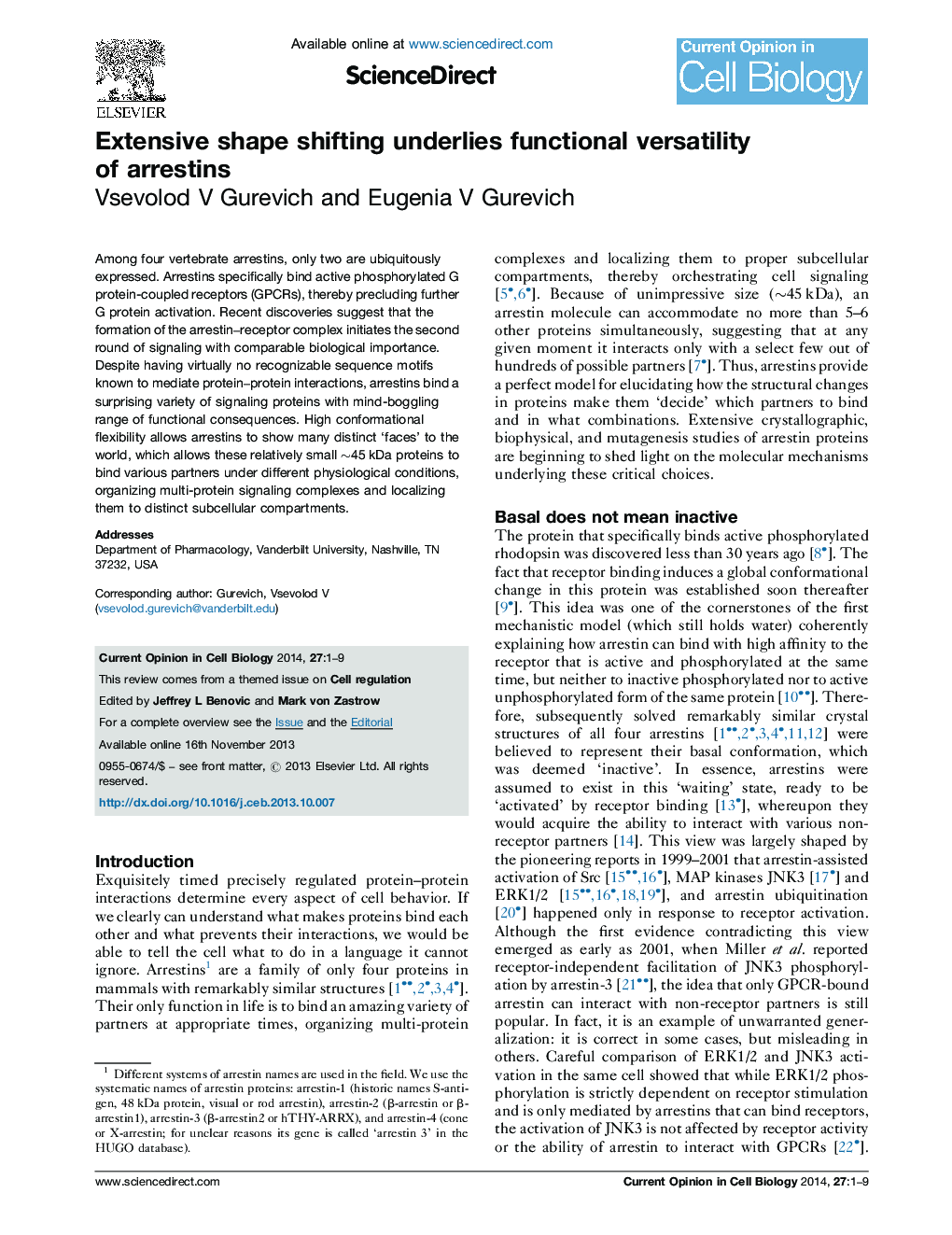| Article ID | Journal | Published Year | Pages | File Type |
|---|---|---|---|---|
| 8465942 | Current Opinion in Cell Biology | 2014 | 9 Pages |
Abstract
Among four vertebrate arrestins, only two are ubiquitously expressed. Arrestins specifically bind active phosphorylated G protein-coupled receptors (GPCRs), thereby precluding further G protein activation. Recent discoveries suggest that the formation of the arrestin-receptor complex initiates the second round of signaling with comparable biological importance. Despite having virtually no recognizable sequence motifs known to mediate protein-protein interactions, arrestins bind a surprising variety of signaling proteins with mind-boggling range of functional consequences. High conformational flexibility allows arrestins to show many distinct 'faces' to the world, which allows these relatively small â¼45Â kDa proteins to bind various partners under different physiological conditions, organizing multi-protein signaling complexes and localizing them to distinct subcellular compartments.
Related Topics
Life Sciences
Biochemistry, Genetics and Molecular Biology
Cell Biology
Authors
Vsevolod V Gurevich, Eugenia V Gurevich,
